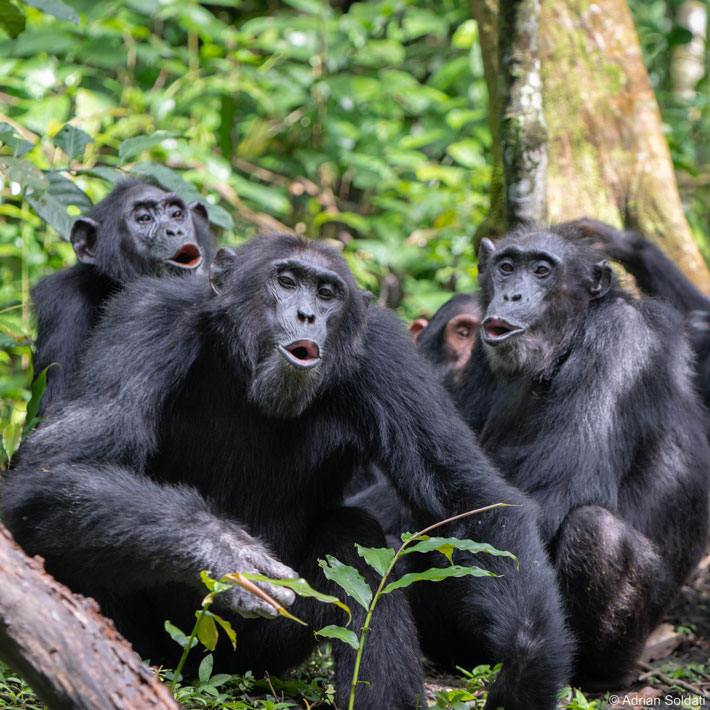 ZURICH, SWITZERLAND—According to a statement released by the University of Zurich, the ability to combine vocalizations into sequences to convey meaning may date back some six million years ago, to the last common ancestor of modern humans and chimpanzees. Maël Leroux of the University of Zurich and his colleagues exposed wild chimpanzees in Uganda to model snakes. “Chimpanzees produce ‘alarm-huus’ when surprised and ‘waa-barks’ when potentially recruiting [other chimpanzees] during aggression or hunting,” Leroux said. The wild chimps, he said, combined these calls when they were exposed to the perceived threat of the model snake. And, he added, chimpanzees responded strongest to playbacks of the combined calls, compared to the “alarm-huu” or “waa-bark” calls alone. “This makes sense because a threat that needs recruitment is an urgent event and suggests listening chimpanzees really are combining the meaning of the individual calls,” explained team member Simon Townsend of the University of Zurich. Continued research into the calls of other great ape species could offer more clues to the emergence of language, Leroux concluded. To read about biological changes that affected linguistic development, go to "You Say What You Eat."
ZURICH, SWITZERLAND—According to a statement released by the University of Zurich, the ability to combine vocalizations into sequences to convey meaning may date back some six million years ago, to the last common ancestor of modern humans and chimpanzees. Maël Leroux of the University of Zurich and his colleagues exposed wild chimpanzees in Uganda to model snakes. “Chimpanzees produce ‘alarm-huus’ when surprised and ‘waa-barks’ when potentially recruiting [other chimpanzees] during aggression or hunting,” Leroux said. The wild chimps, he said, combined these calls when they were exposed to the perceived threat of the model snake. And, he added, chimpanzees responded strongest to playbacks of the combined calls, compared to the “alarm-huu” or “waa-bark” calls alone. “This makes sense because a threat that needs recruitment is an urgent event and suggests listening chimpanzees really are combining the meaning of the individual calls,” explained team member Simon Townsend of the University of Zurich. Continued research into the calls of other great ape species could offer more clues to the emergence of language, Leroux concluded. To read about biological changes that affected linguistic development, go to "You Say What You Eat."
Chimpanzee Study Offers Glimpse of Early Language
